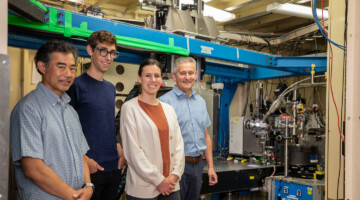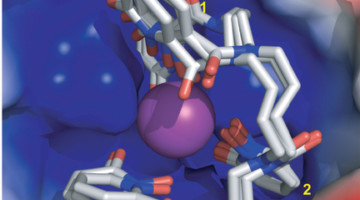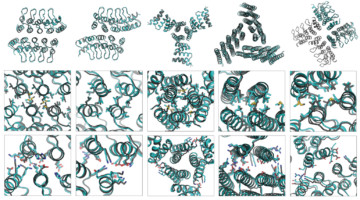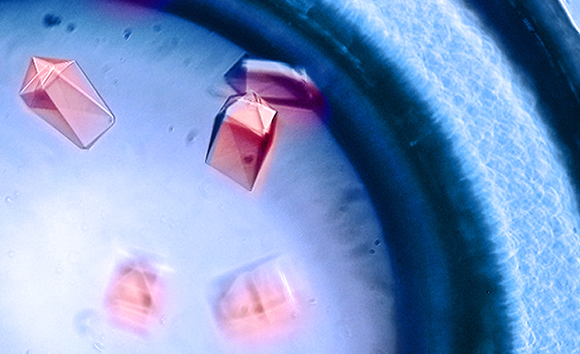In this work, researchers demonstrated a macromolecular scaffold that combines an 8-coordinate synthetic ligand and a mammalian protein to characterize the solution and solid-state behavior of the longest-lived actinium isotope. The information could help design better cancer treatments. Read more »
Global Blood Therapeutics Uses ALS to Tackle Sickle Cell Disease
Sickle cell disease (SCD), which affects millions of people worldwide, has traditionally been treated with a cytotoxic drug that has a range of negative side effects and variable patient response. Bay Area biopharmaceutical company Global Blood Therapeutics (GBT) is on a mission to develop a better treatment and is using the ALS to help. Read more »![]()
Researchers ID New Mechanism for Keeping DNA Protein in Line
The actions of a protein used for DNA replication and repair are guided by electrostatic forces known as phosphate steering, a finding that not only reveals key details about a vital process in healthy cells, but provides new directions for cancer treatment research. Read more »
Protein Complex Shows Promise for Berkelium Separation
Scientists found that the element berkelium breaks form with its heavy-element peers by taking on an extra positive charge when bound to a synthetic organic molecule. This property could help scientists develop better methods for handling and purifying nuclear materials. Read more »
A Systematic Approach to Customizing Cyclic Proteins
Proteins consisting of identical subunits arranged symmetrically around a central axis (cyclic homo-oligomers) play key roles in many biological processes. Researchers have now developed a systematic approach to their design and demonstrated its accuracy using protein crystallography and small-angle x-ray scattering. Read more »
A New Pathway for Radionuclide Uptake
Scientists have reported a major advance in understanding the biological chemistry of radioactive metals, opening up new avenues of research into strategies for remedial action in the event of possible human exposure to nuclear contaminants. Read more »![]()
![]()
Peptoid Nanosheets Offer a Diversity of Functionalities
Researchers at the ALS have recently observed peptoid nanosheets as they self-assemble at an oil–water interface. This development opens the door to designing peptoid nanosheets of increasing complexity and functionality for a broad range of applications, including improved chemical sensors and separators, and safer, more effective drug-delivery vehicles. Read more »![]()
![]()






